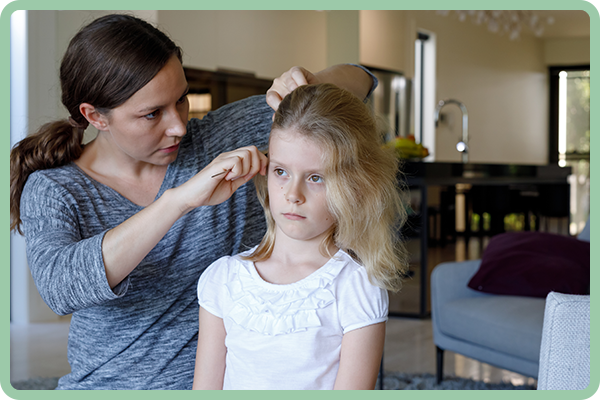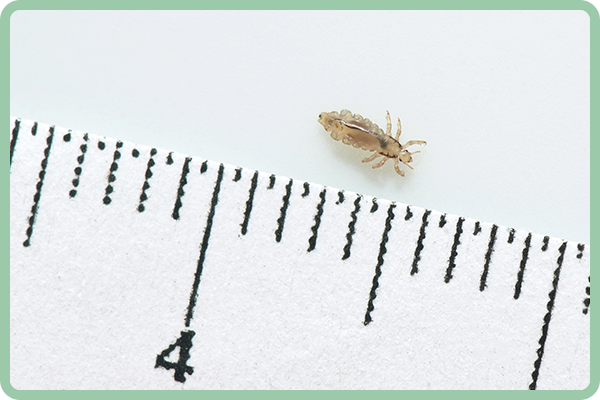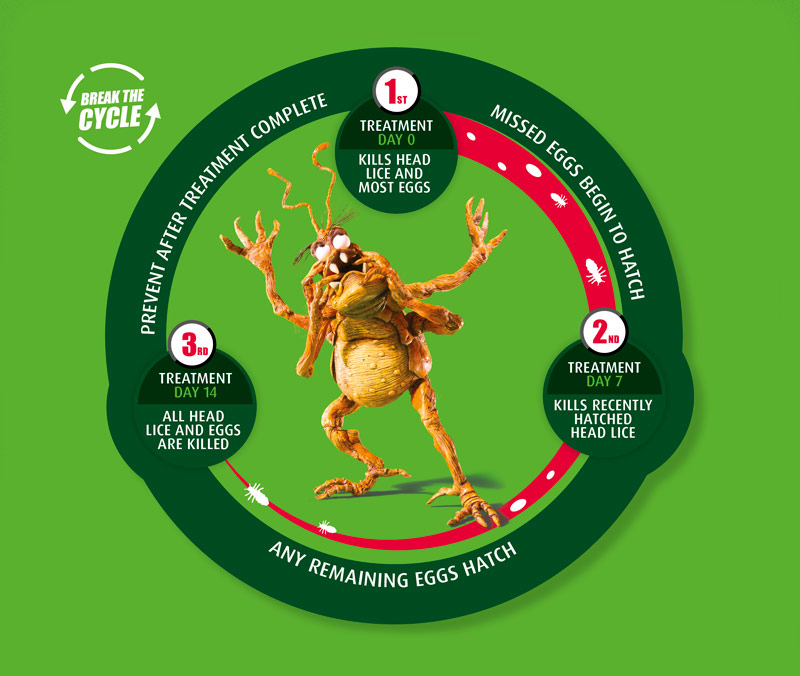Considering how tiny head lice are, treating them can cause a huge amount of frustration. Here are our best tips on how to prevent and treat head lice.
Head lice are notoriously difficult to get rid of due to the nature of the head lice life cycle and the minute size of the eggs. Below is some important information that will help explain why head lice treatments need to be repeated over time.
Head lice are tiny, wingless insects about the size of a sesame seed. They have six legs with claws and they can attach themselves to hair. They can live on your head, feeding off blood under the scalp. Head lice eggs or nits are usually white, oval, pin-head sized eggs that attach to the hair shaft and hatch six to ten days after being laid, making head lice infestation an ongoing problem. Head lice cannot fly or jump; they usually spread via head-to-head contact but can also be transmitted by sharing hats and brushes that have been recently used by an infested person.
Lice cannot jump or fly. They spread from person to person when people's heads touch or through sharing things like hats or hair brushes.


Head lice are parasitic by nature and rely solely on humans for their existence. They lay their eggs (nits) on the hair shaft around 1.5cm from the scalp1. After hatching, each louse can live for approximately five weeks, but during that lifetime a female can lay up to 120 eggs2. Head lice live for 32-35 days after hatching2. The life cycle of head lice begins with eggs being laid, hatching, maturation into adults, mating and egg laying after which the parent head lice die. These eggs will hatch in six to ten days continuing the life cycle until the infestation is treated and the cycle is broken. The typical head louse dehydrates and dies anywhere between 6 and 24 hours when away from the scalp.

1. In a lifetime, a female louse can lay up to 120 eggs and it is difficult to kill all the eggs present when infestation is first treated.
2. Nits hatch 6-10 days after being laid, continuing the life cycle and making infestation often an ongoing problem.
3. A head lice life cycle lasts 32-35 days, making it necessary to repeat treatments to fully break the cycle.
4. Using MOOV Head Lice Defence Spray coats the hair in thin film that deters lice over an 8 hour period.
The key to treatment of a head lice infestation is to break their life cycle. A lot of the frustration parents experience stems from their belief that current treatments don’t seem to work. There are several possible reasons for this. Head lice resistance may be one cause. Another reason for recurring infestation can be attributed to not fully completing a treatment cycle, and therefore not breaking the lifecycle of the head lice. It is difficult to kill all the eggs present when the infestation is first treated. The MOOV Head Lice Range of products is the result of many years of Australian research into this growing social problem.
To understand why, you need to understand the lifecycle of a louse. Each louse can live for approximately five weeks, but during that lifetime a female can lay up to 120 eggs. The head lice life cycle lasts between 32 and 35 days1. Because many of the lice may still be in their eggs when the first treatment is carried out, a second and third treatment is needed to ensure all head lice are effectively targeted during the treatment. Nits hatch every 6 – 101 days which is why treatment is repeated on days 7 and 14 to ensure all eggs have been hatched.